Multi-Beam Luneburg Lens with Reduced Size Patch Antenna
Abstract
1. Introduction
2. Antenna Developments
2.1. Luneburg Lens
2.2. Luneburg Lens with WR62 Waveguide
2.3. Equation for Beam Overlap in Plate Luneburg Lens
2.4. Luneburg Lens with MPA with CSRR
3. Conclusions
Author Contributions
Funding
Data Availability Statement
Acknowledgments
Conflicts of Interest
References
- Lee, K.F.; Tong, K.-F. Microstrip Patch Antennas. In Handbook of Antenna Technologies; Springer: Singapore, 2016; pp. 787–852. [Google Scholar]
- Christina, G. A Review on Novel Microstrip Patch Antenna Designs and Feeding Techniques. IRO J. Sustain. Wirel. Syst. 2022, 4, 110–120. [Google Scholar] [CrossRef]
- Chen, Z.N.; Qing, X. Slotted microstrip antennas for circular polarization with compact size. IEEE Antennas Propag. Mag. 2013, 55, 124–137. [Google Scholar]
- Islam, M.T.; Shakib, M.N.; Misran, N.; Yatim, B. Analysis of broadband slotted microstrip patch antenna. In Proceedings of the 2008 11th International Conference on Computer and Information Technology, Khulna, Bangladesh, 24–27 December 2008; IEEE: Piscataway, NJ, USA, 2008; pp. 758–761. [Google Scholar]
- Li, S.J.; Han, B.W.; Li, Z.Y.; Liu, X.B.; Huang, G.S.; Li, R.Q.; Cao, X.Y. Transmissive coding metasurface with dual-circularly polarized multi-beam. Opt. Express 2022, 30, 26362–26376. [Google Scholar] [CrossRef]
- Li, S.; Li, Z.; Liu, X.; He, C.; Huang, G.; Li, R.; Cao, X. Transmissive digital coding metasurfaces for polarization-dependent dual-mode quad orbital angular momentum beams. ACS Appl. Mater. Interfaces 2023, 15, 23690–23700. [Google Scholar] [CrossRef] [PubMed]
- Atanasov, A.N.; Alink, M.S.; Van Vliet, F.E. A figure of merit for simultaneous-multi-beam transmit antenna arrays. IEEE Trans. Radar Syst. 2023, 1, 60–68. [Google Scholar] [CrossRef]
- Adane, A.; Gallée, F.; Person, C.; Puyal, V.; Villeneuve, C.; Dragomirescu, D. Implementation of broadband microstrip-U coupled patch array on Si/BCB membrane for beamforming applications at 60 GHz. In Proceedings of the 5th European Conference on Antennas and Propagation (EUCAP), Rome, Italy, 11–15 April 2011; IEEE: Piscataway, NJ, USA, 2011; pp. 1263–1267. [Google Scholar]
- Schulwitz, L.; Mortazawi, A. A new low loss Rotman lens design using a graded dielectric substrate. IEEE Trans. Microw. Theory Tech. 2008, 56, 2734–2741. [Google Scholar] [CrossRef]
- Bor, J.; Lafond, O.; Merlet, H.; Le Bars, P.; Himdi, M. Technological process to control the foam dielectric constant application to microwave components and antennas. IEEE Trans. Compon. Packag. Manuf. Technol. 2014, 4, 938–942. [Google Scholar] [CrossRef]
- Lafond, O.; Himdi, M.; Bor, J.; Jouadé, A. Inhomogeneous Lens Antenna using Pressed Foam Technological Process in MM Wave Range. In Proceedings of the 2018 IEEE Conference on Antenna Measurements & Applications (CAMA), Västerås, Sweden, 3–6 September 2018; IEEE: Piscataway, NJ, USA, 2018; pp. 1–4. [Google Scholar]
- Chen, J.; Chu, H.; Huang, Y.; Lai, Y.; Chen, M. Ultra-wideband Luneburg lens with high performance based on gradient metamaterials. J. Phys. D Appl. Phys. 2022, 55, 355109. [Google Scholar] [CrossRef]
- Chang, S.C.; Chou, H.T.; Huang, H.J. 2-D Luneburg lens beamforming network for planar phased array of antennas to radiate near-field focused multibeams. IEEE Trans. Antennas Propag. 2020, 68, 5904–5915. [Google Scholar] [CrossRef]
- Zetterstrom, O.; Fonseca, N.J.; Quevedo-Teruel, O. Compact half-Luneburg lens antenna based on a glide-symmetric dielectric structure. IEEE Antennas Wirel. Propag. Lett. 2022, 21, 2283–2287. [Google Scholar] [CrossRef]
- Mahmoud, A.; Ruiz-García, J.; de Sagazan, O.; Ettorre, M.; Sauleau, R.; González-Ovejero, D. Low-Cost and Low-Profile Sub-Terahertz Luneburg Lens Beamformer on Polymer. IEEE Antennas Wirel. Propag. Lett. 2023, 22, 1411–1415. [Google Scholar] [CrossRef]
- Emerson, A.J.; Cuming, A.J. Stepped-index Lüneberg lenses: Antennas and reflective devices. Electron. Des. 1960, 8, 86–89. [Google Scholar]
- Fuchs, B.; Le Coq, L.; Lafond, O.; Rondineau, S.; Himdi, M. Design optimization of multishell Luneburg lenses. IEEE Trans. Antennas Propag. 2007, 55, 283–289. [Google Scholar] [CrossRef]
- Hu, B.; Wu, T.; Cai, Y.; Zhang, W.; Zhang, B.L. A novel metamaterial-based planar integrated luneburg lens antenna with wide bandwidth and high gain. IEEE Access 2019, 8, 4708–4713. [Google Scholar] [CrossRef]
- Lafond, O.; Himdi, M.; Merlet, H.; Lebars, P. An active reconfigurable antenna at 60 GHz based on plate inhomogeneous lens and feeders. IEEE Trans. Antennas Propag. 2012, 61, 1672–1678. [Google Scholar] [CrossRef]
- Brookner, E. (Ed.) Practical Phased-Array Antenna Systems; Artech House: Norwood, MA, USA, 1991. [Google Scholar]
- Luneburg, R. Mathematical Theory of Optics; University of California Press: Berkeley, CA, USA, 1966. [Google Scholar]
- Nadzir, N.M.; Rahim, M.K.A.; Murad, N.A.; Himdi, M.; Ayop, O. Circular Complementary Split Ring Resonator Rotation for Linear Array Millimeter Wave Microstrip Patch Antenna. ELEKTRIKA-J. Electr. Eng. 2021, 20, 43–47. [Google Scholar] [CrossRef]
- Roshani, S.; Shahveisi, H. Mutual Coupling Reduction in Microstrip Patch Antenna Arrays Using Simple Microstrip Resonator. Wirel. Pers. Commun. 2022, 126, 1665–1677. [Google Scholar] [CrossRef]
- Dewan, R.; Rahim, M.K.; Hamid, M.R.; Jalil, M.E.; Majid, H.A. Mutual Coupling Reduction in Antenna Using EBG on Double Substrate. TELKOMNIKA Telecommun. Comput. Electron. Control 2017, 15, 799–804. [Google Scholar]
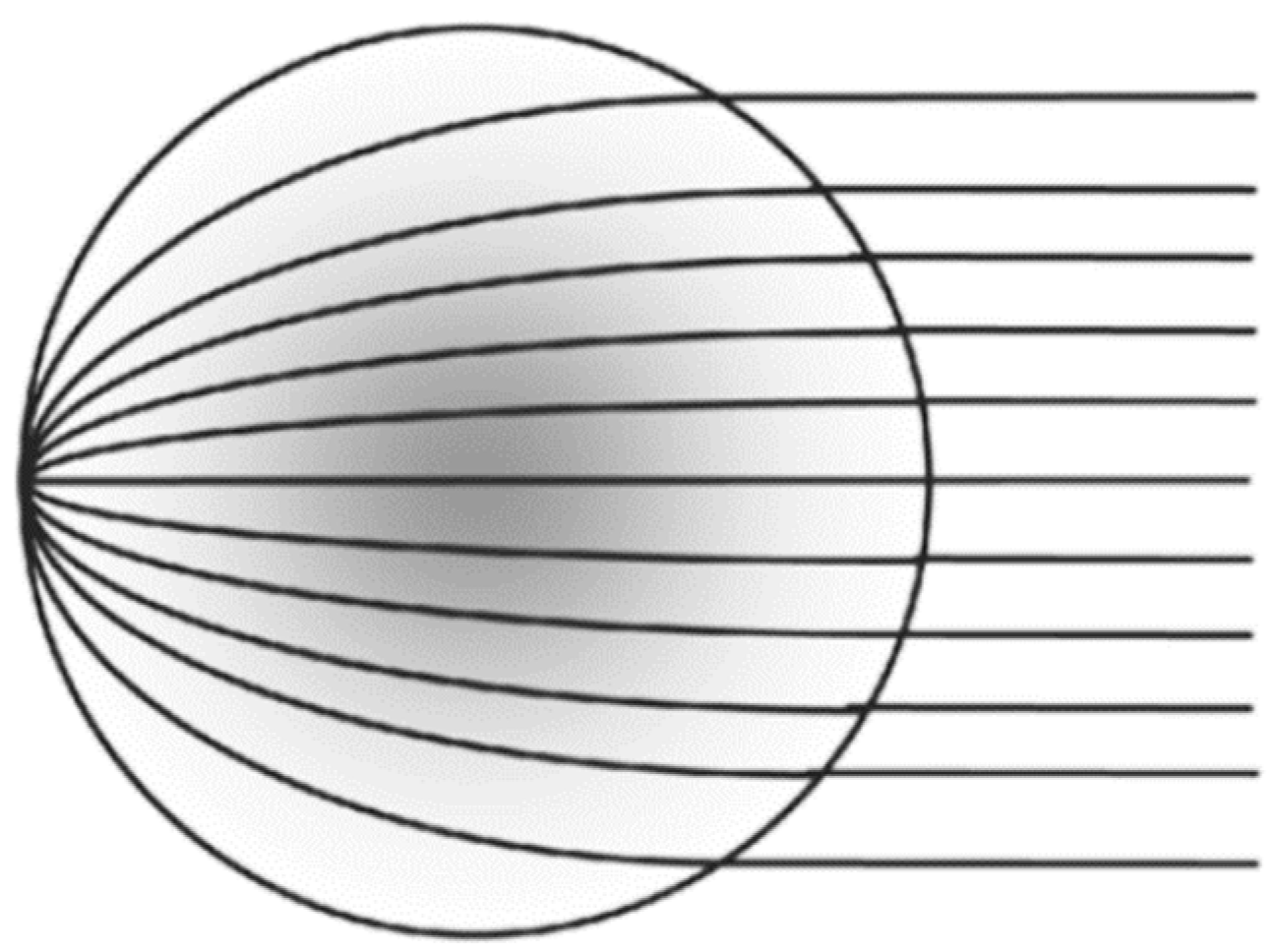
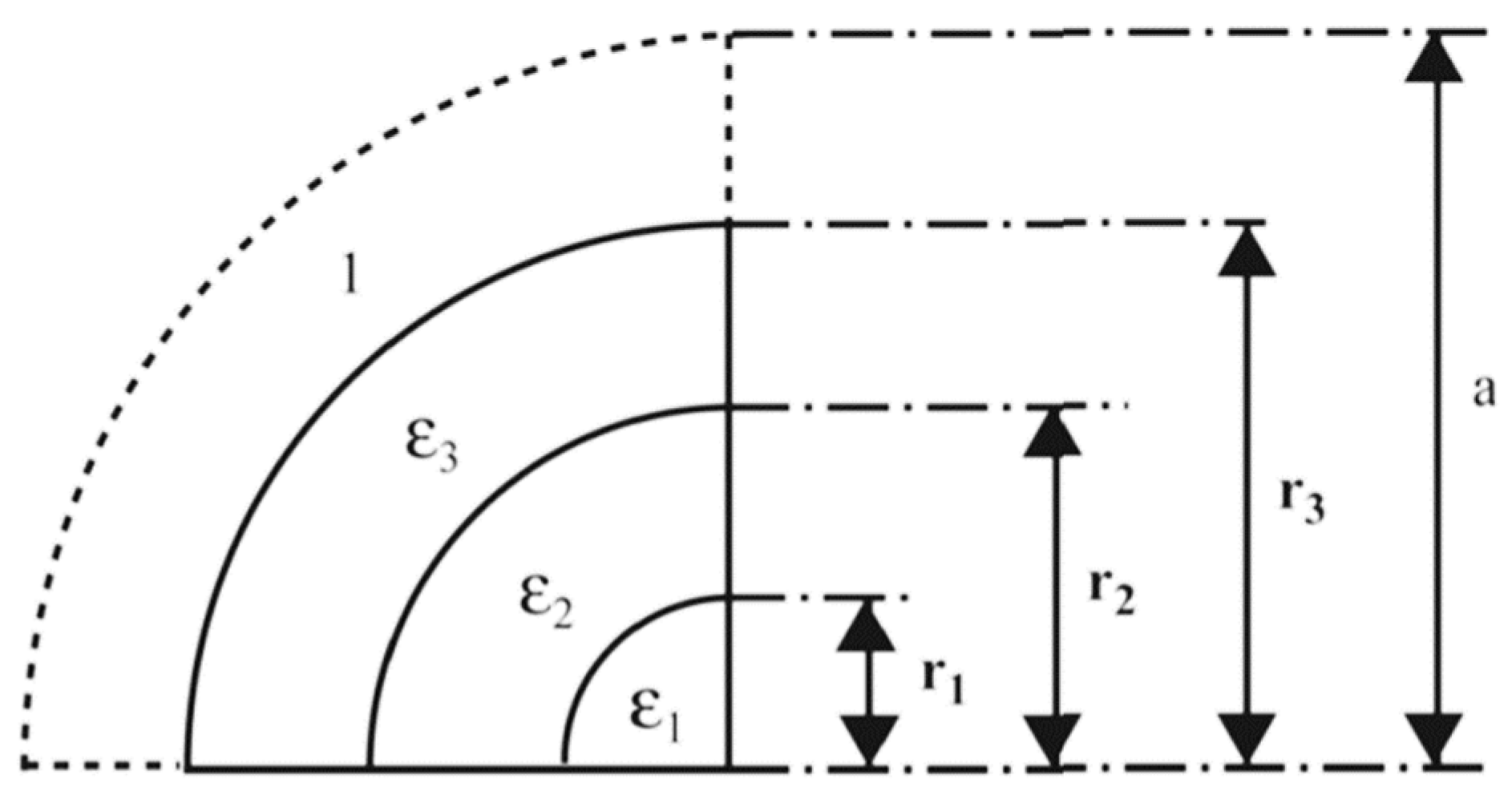
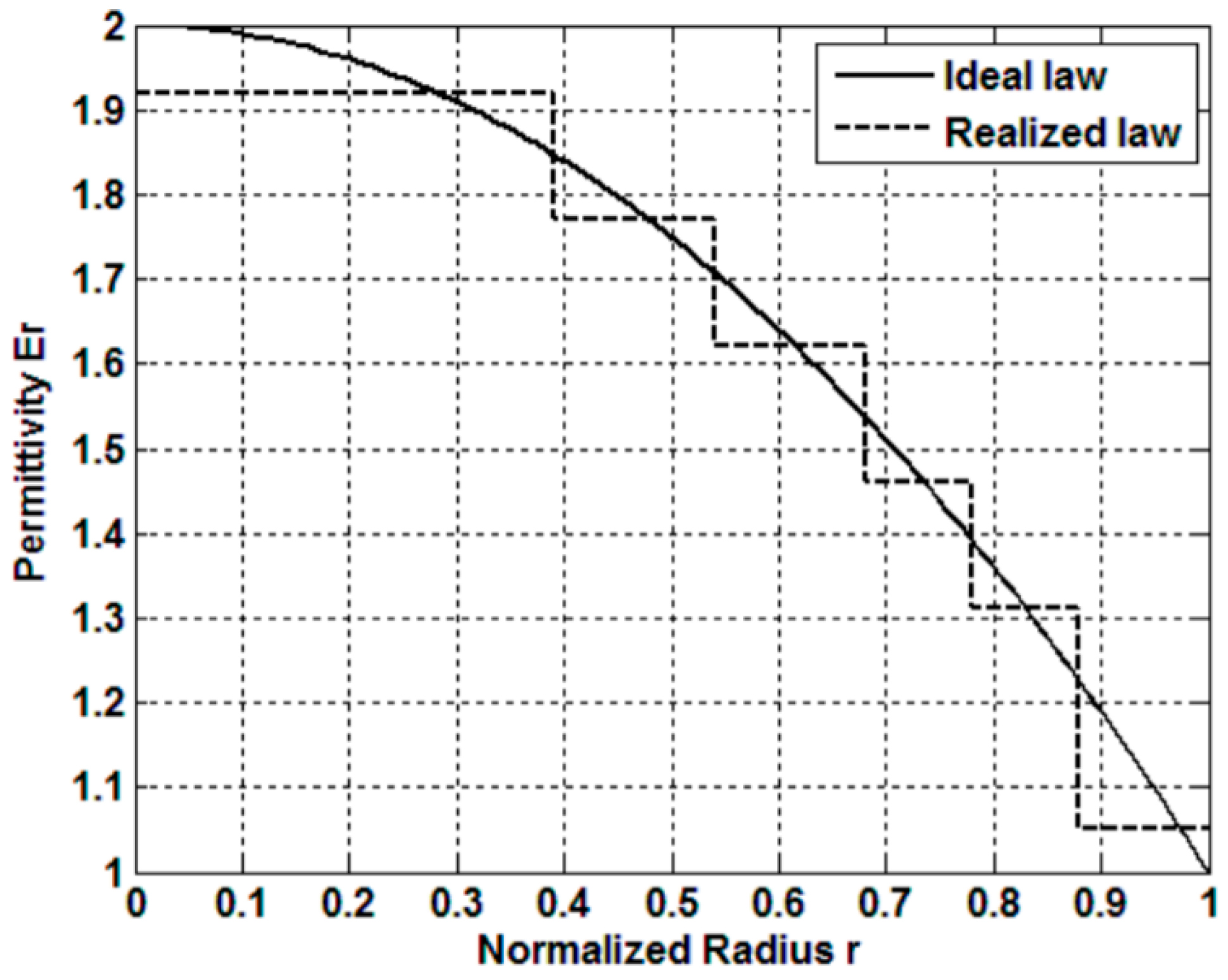
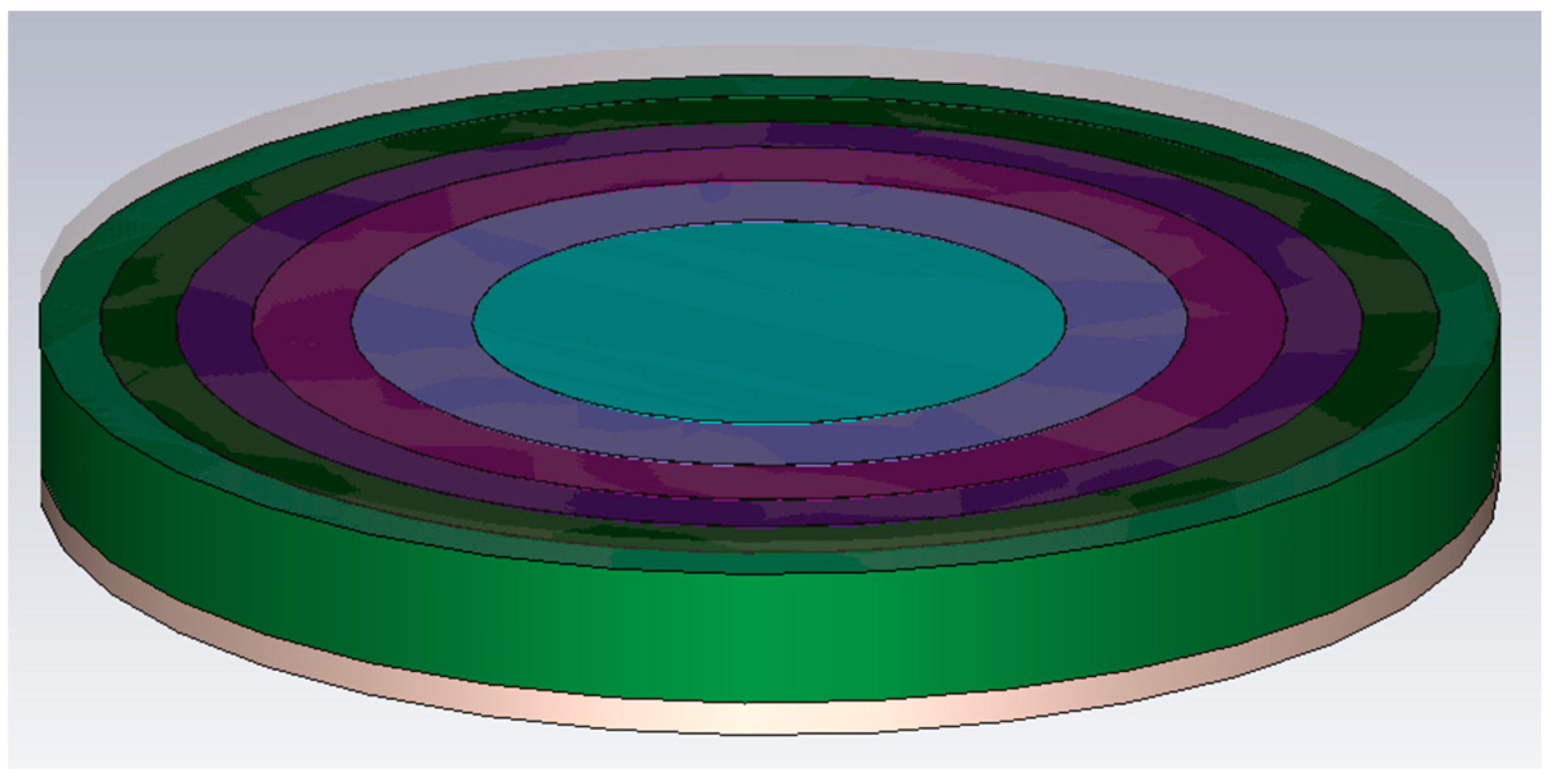

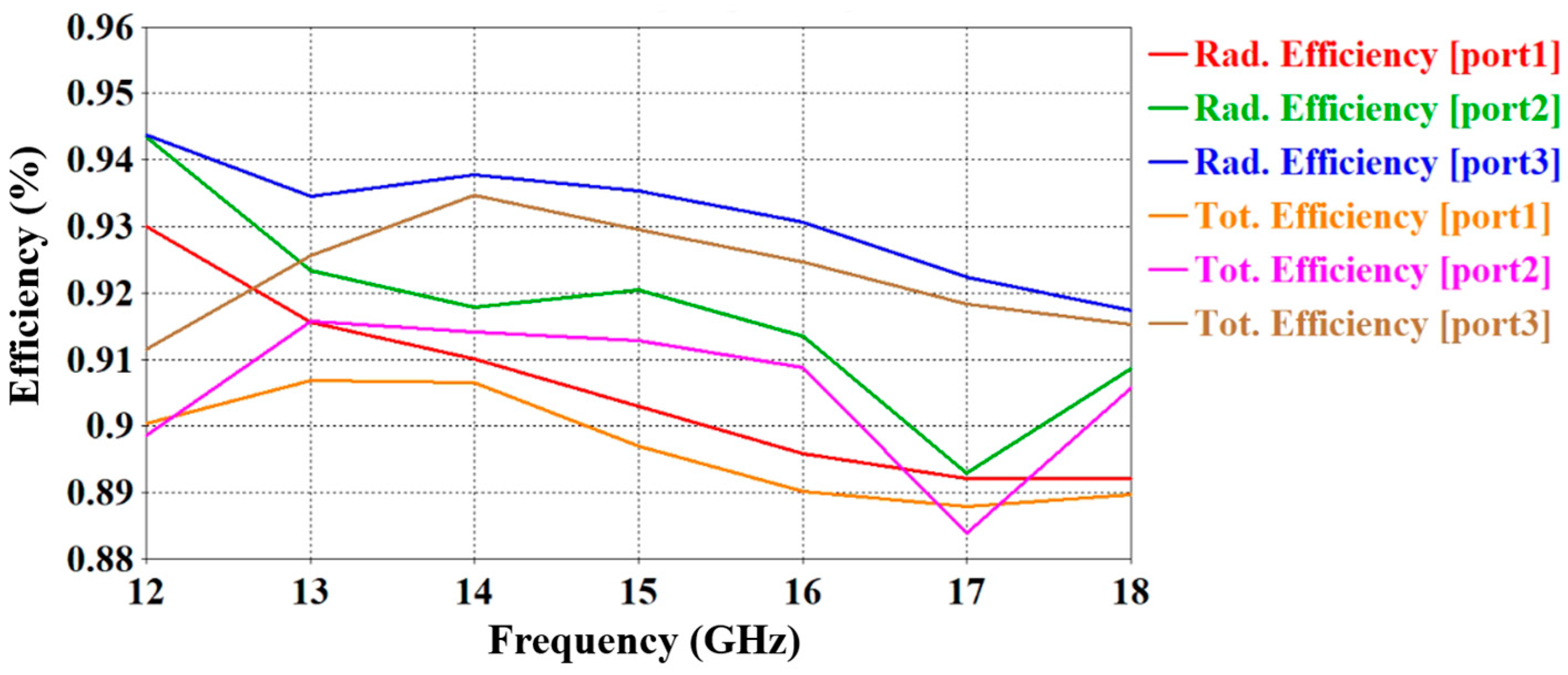
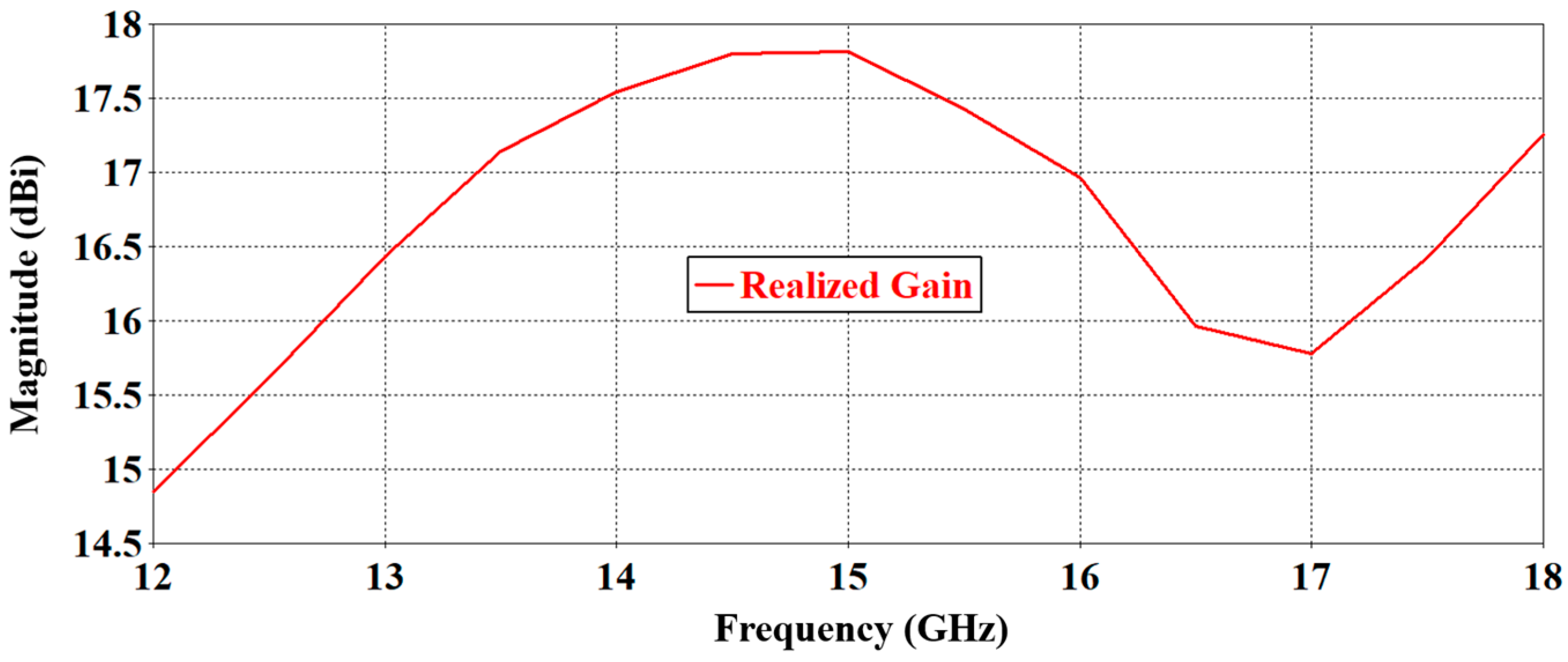
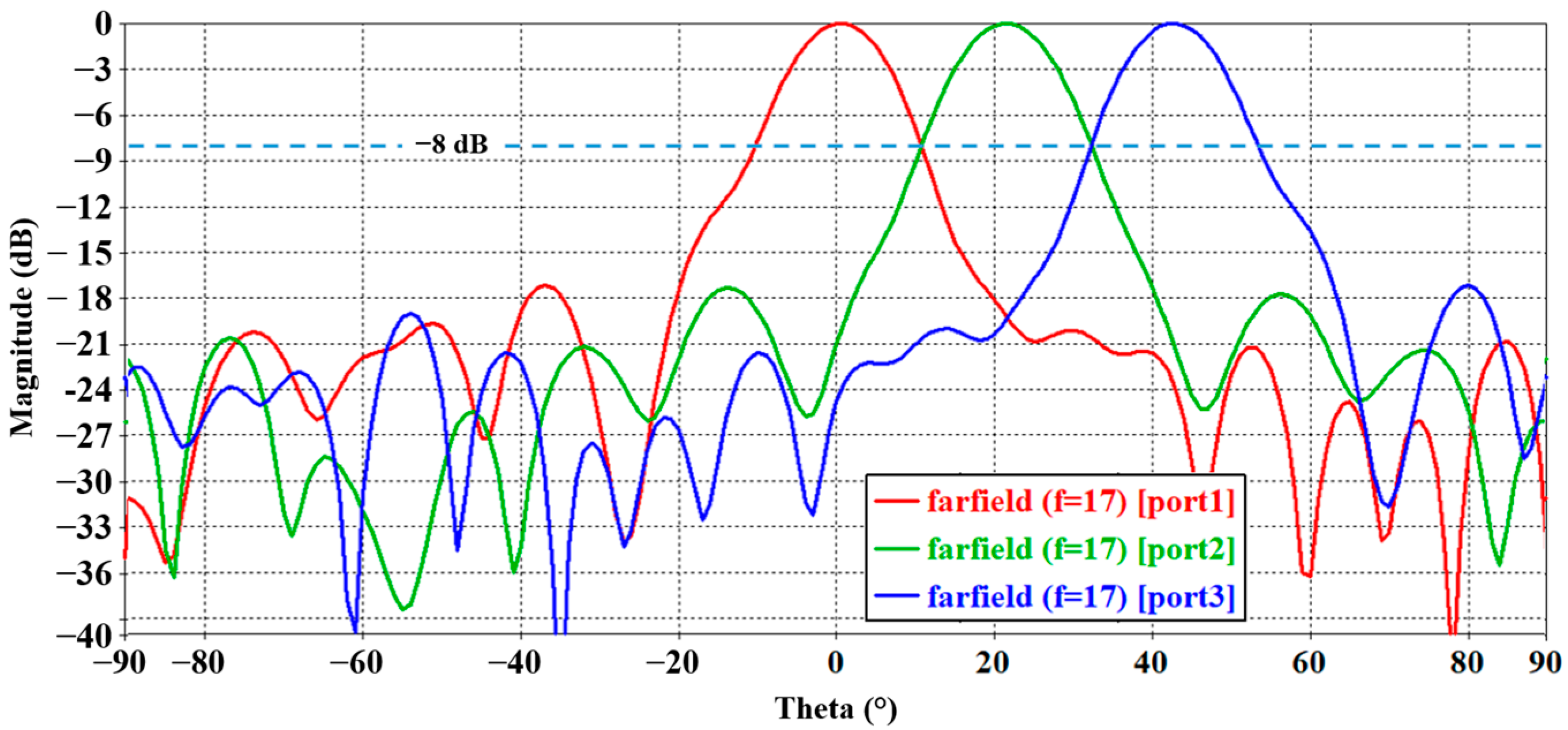
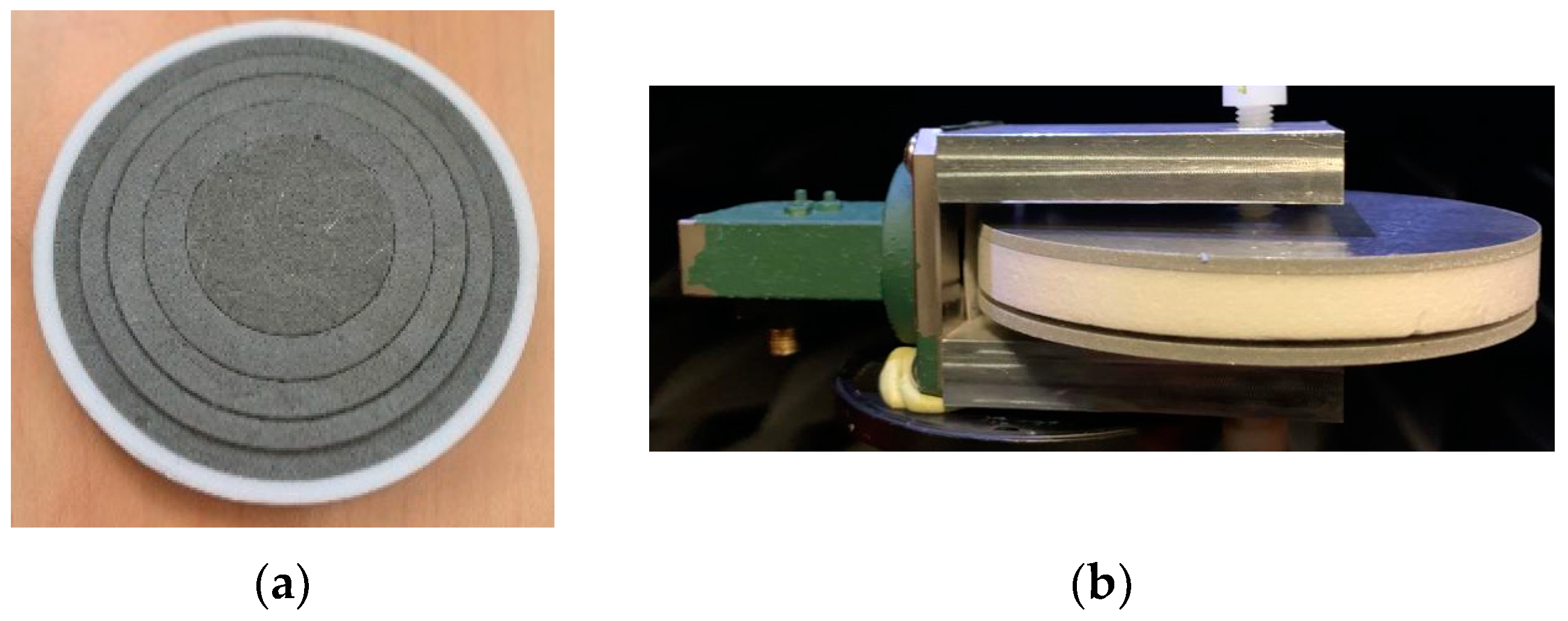
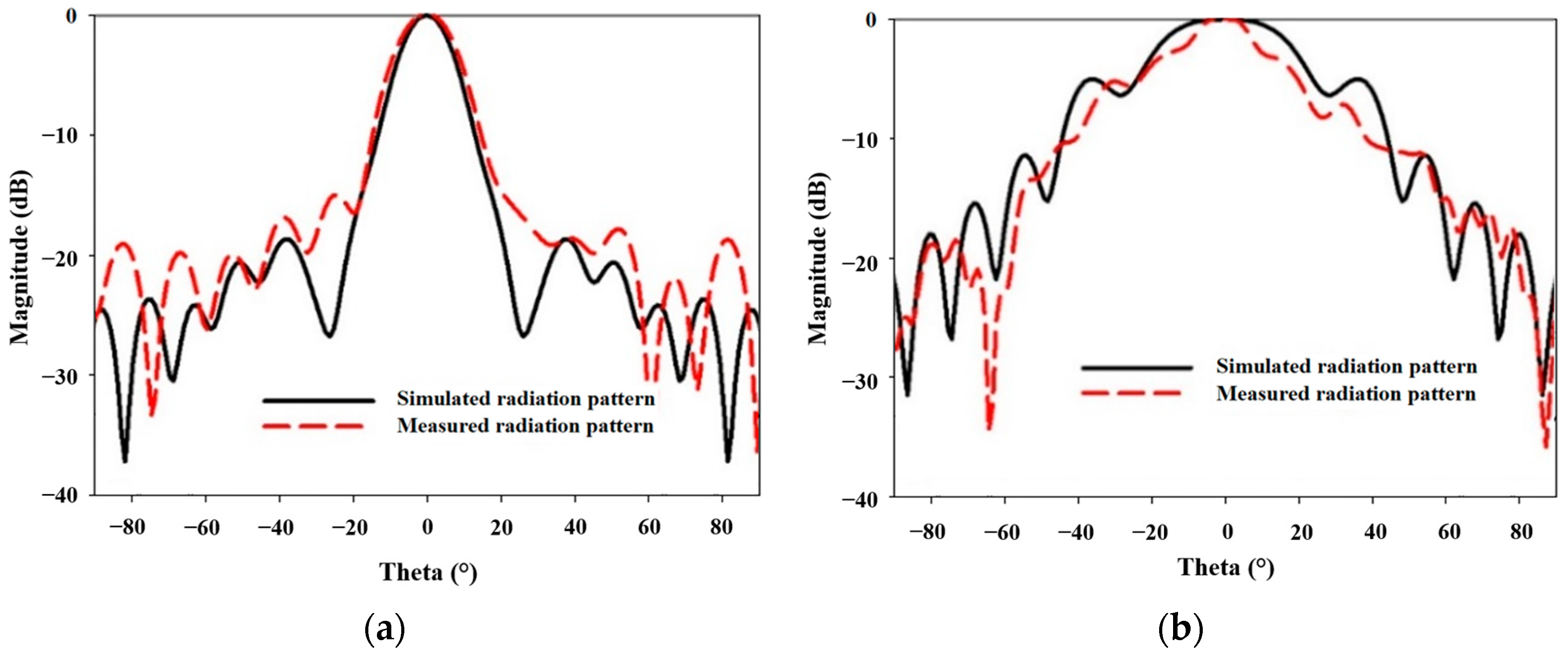
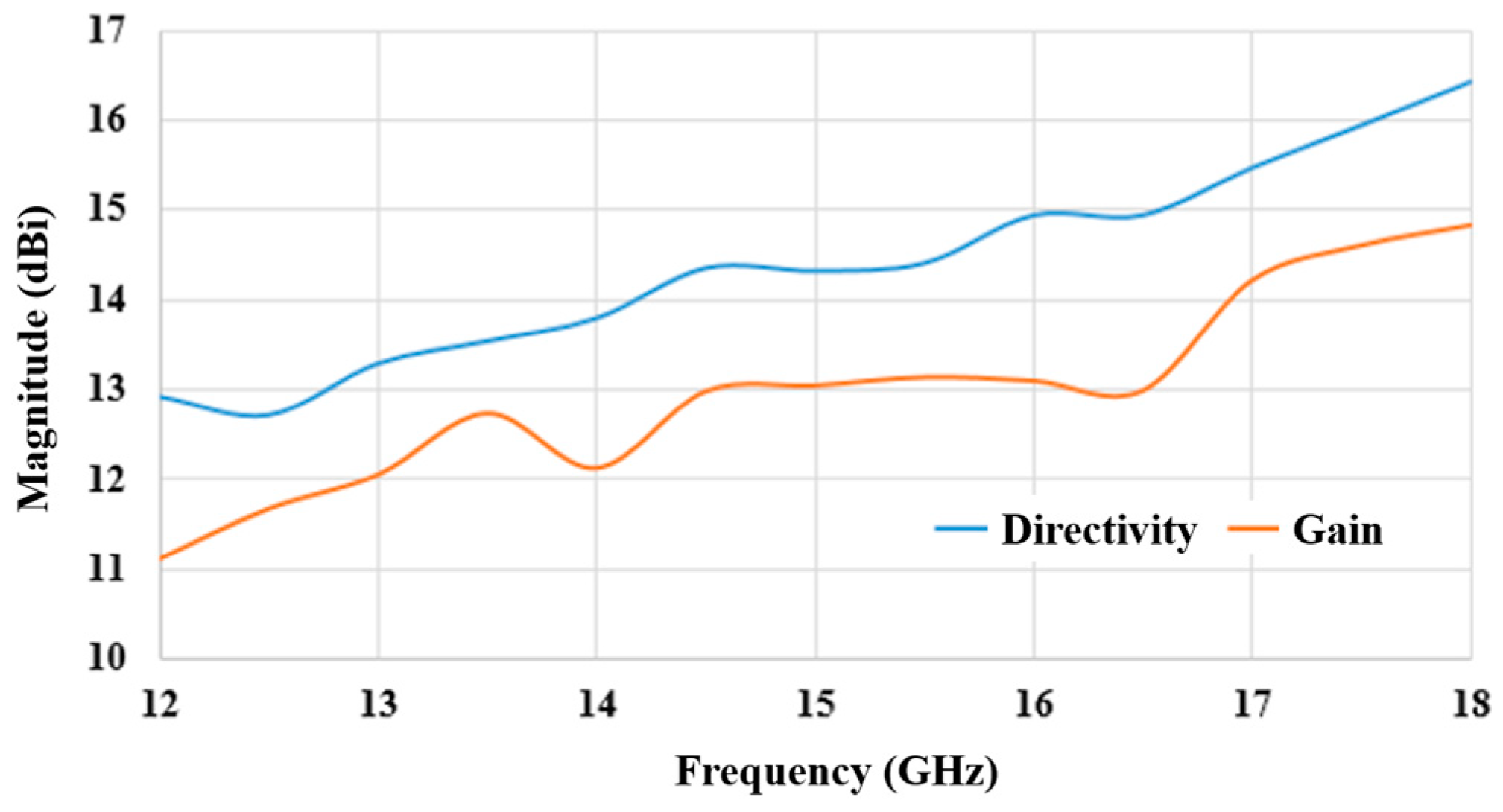
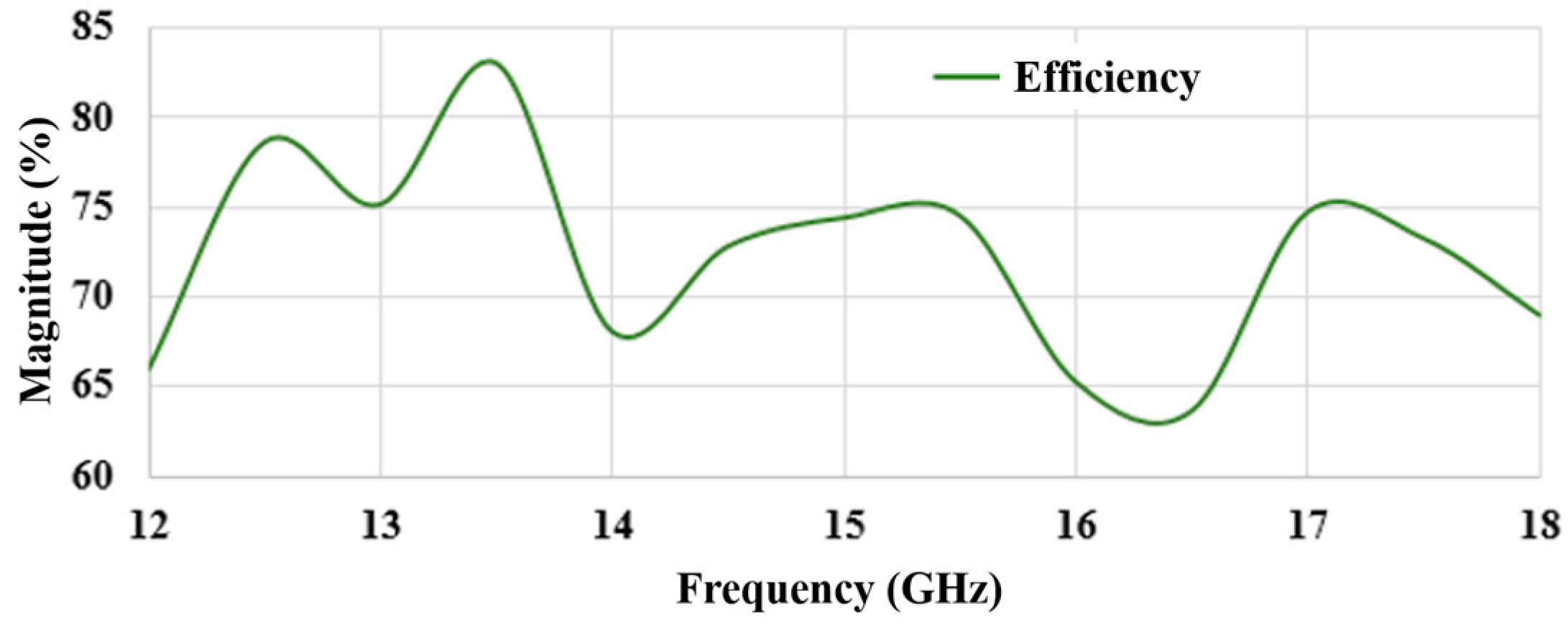
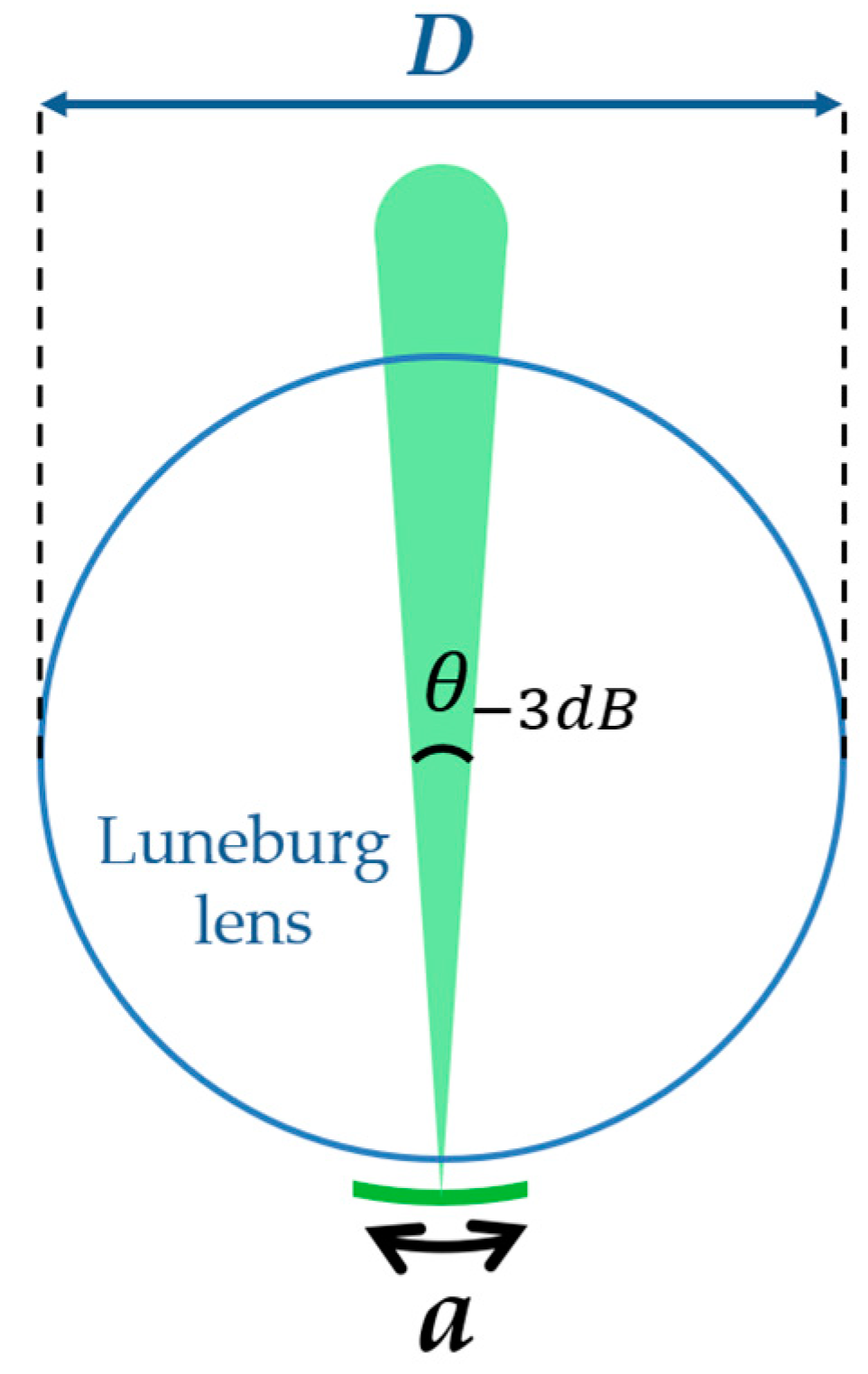
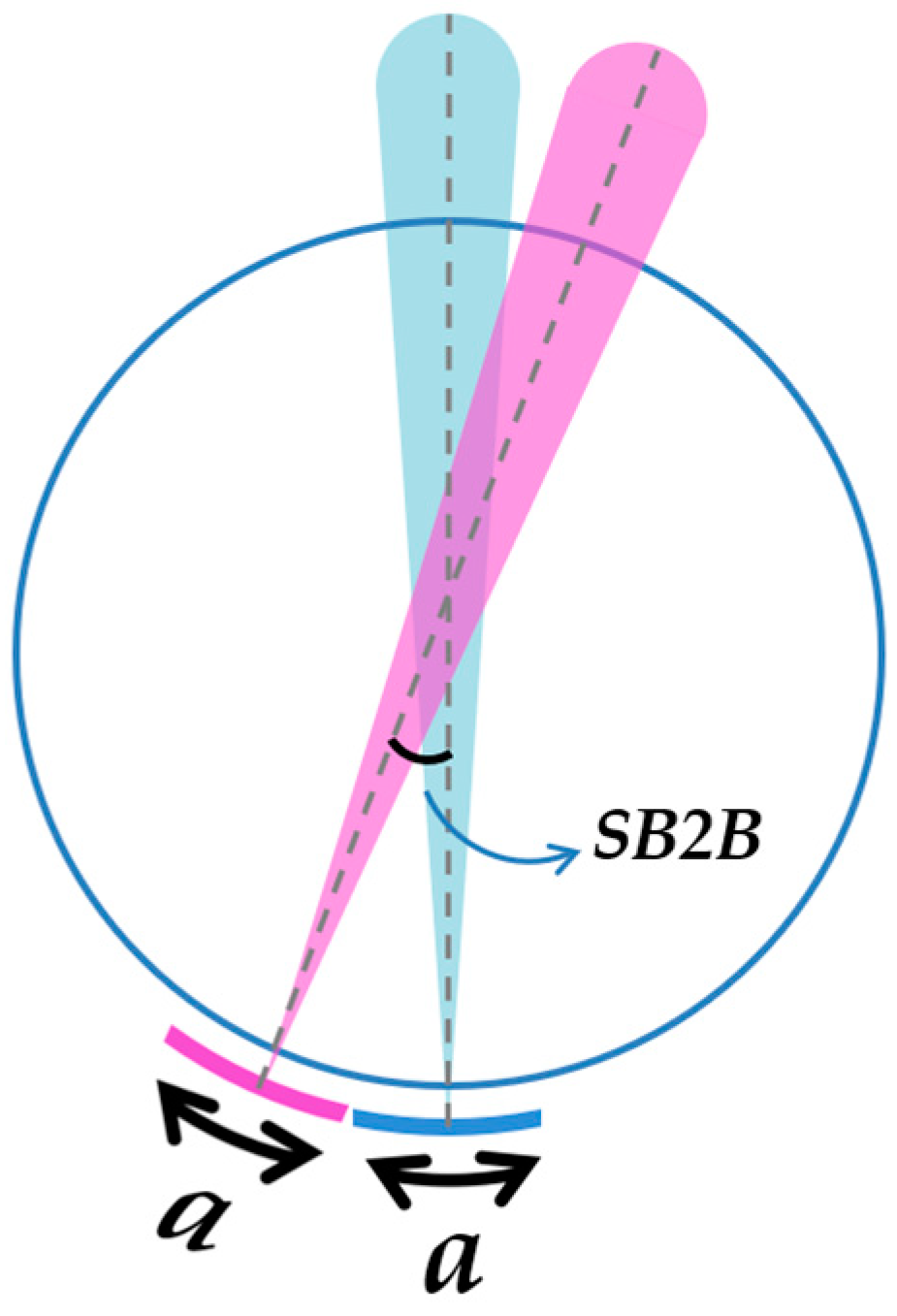
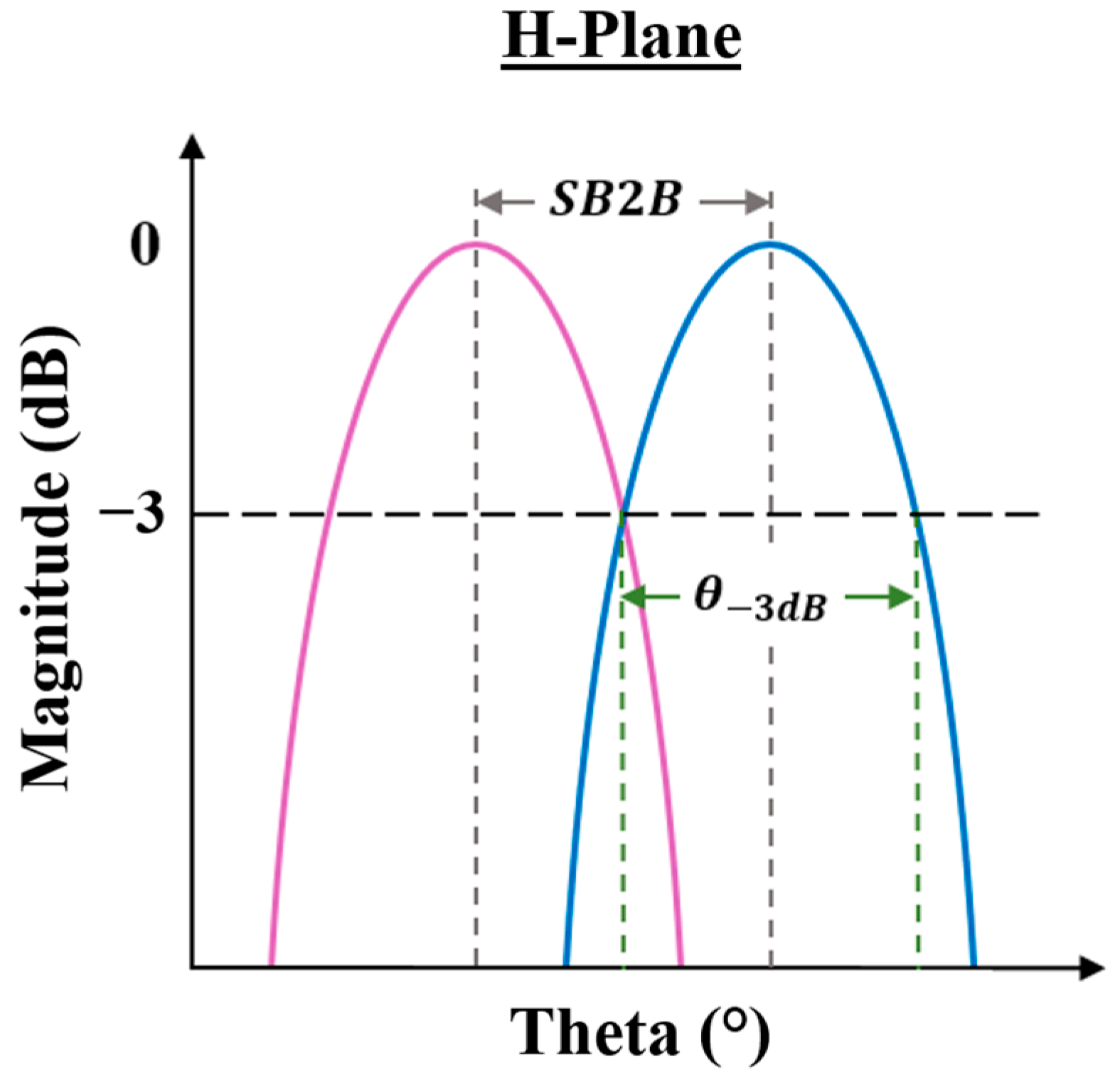
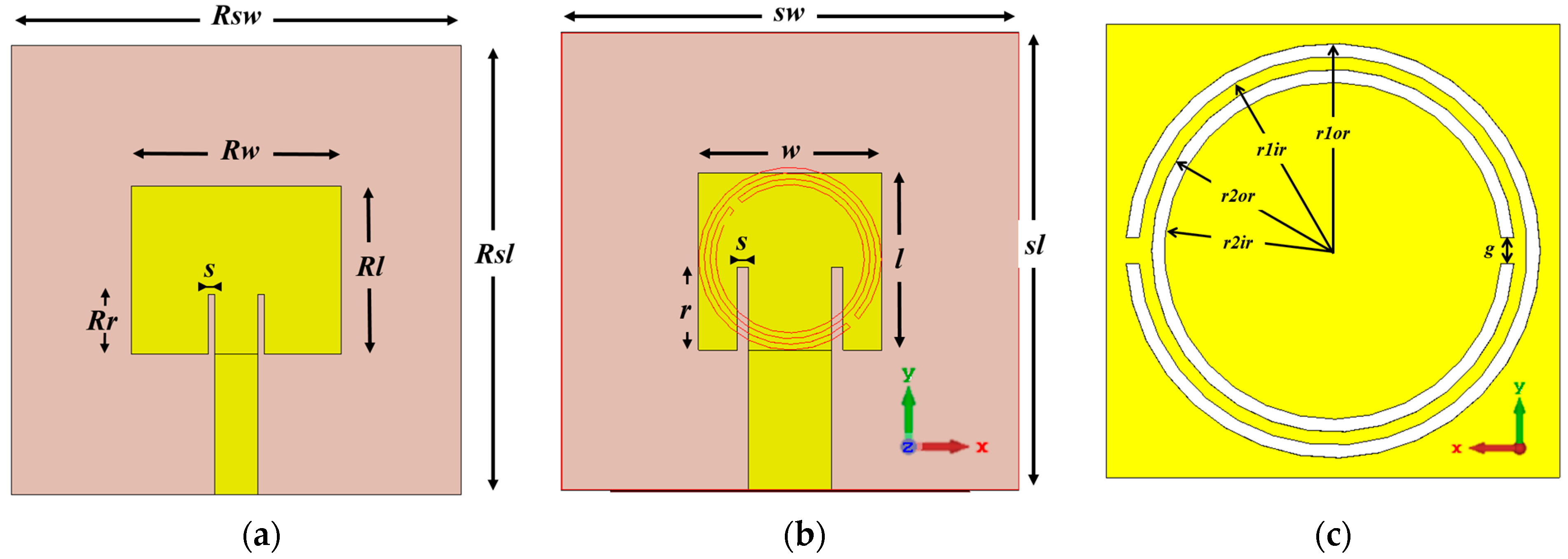
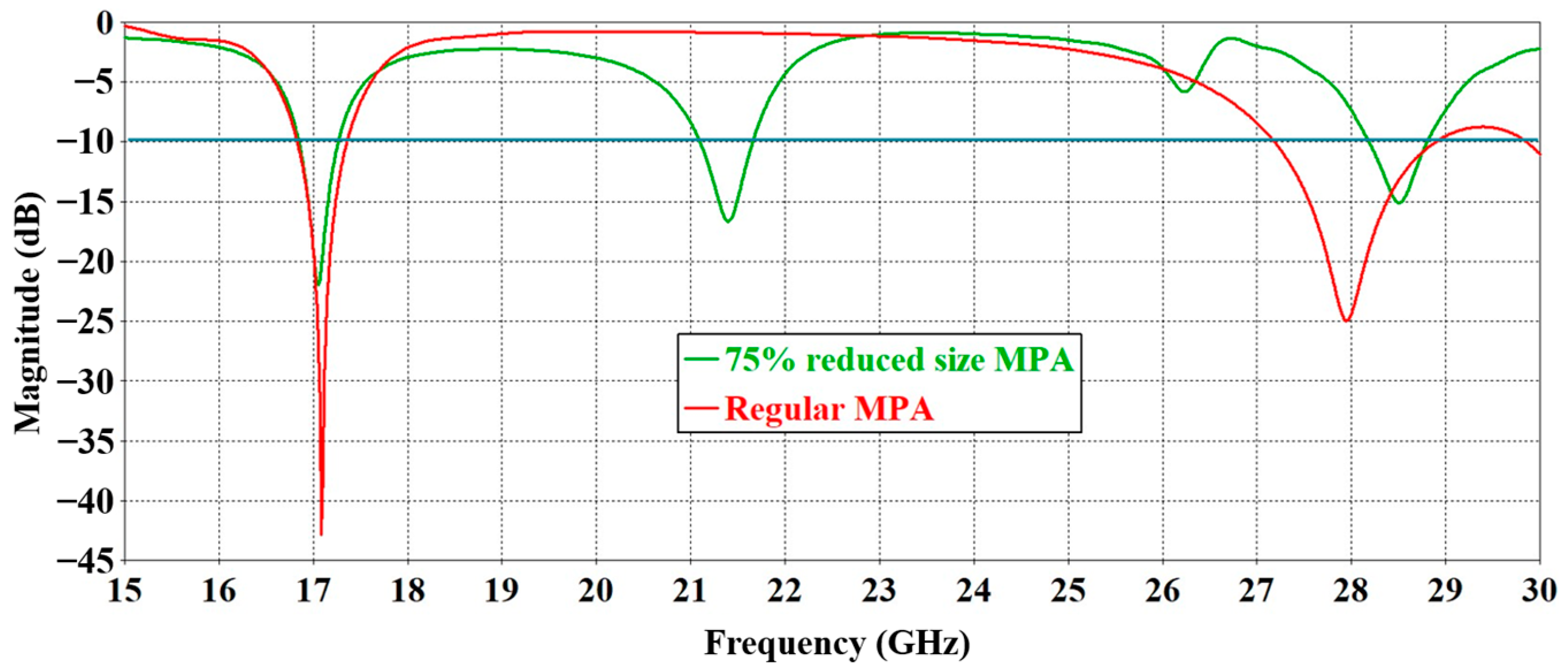
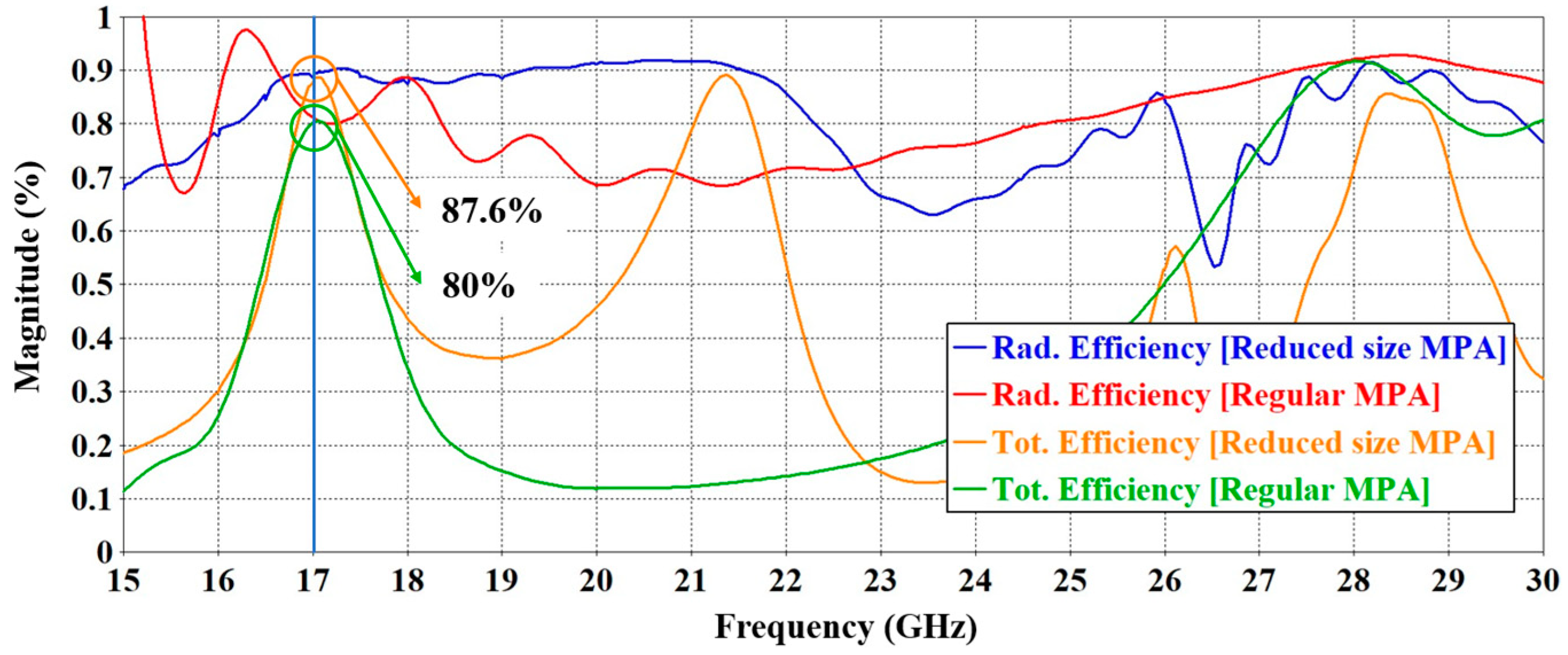
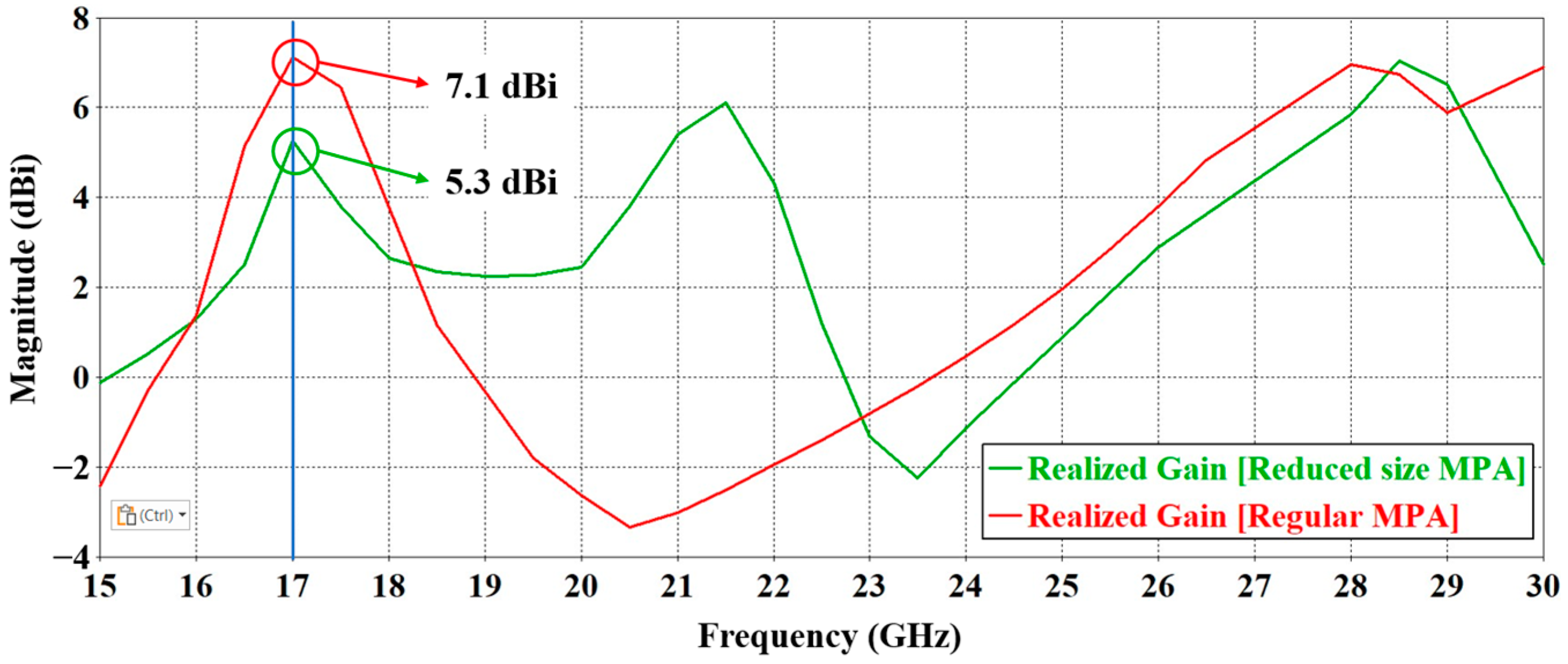
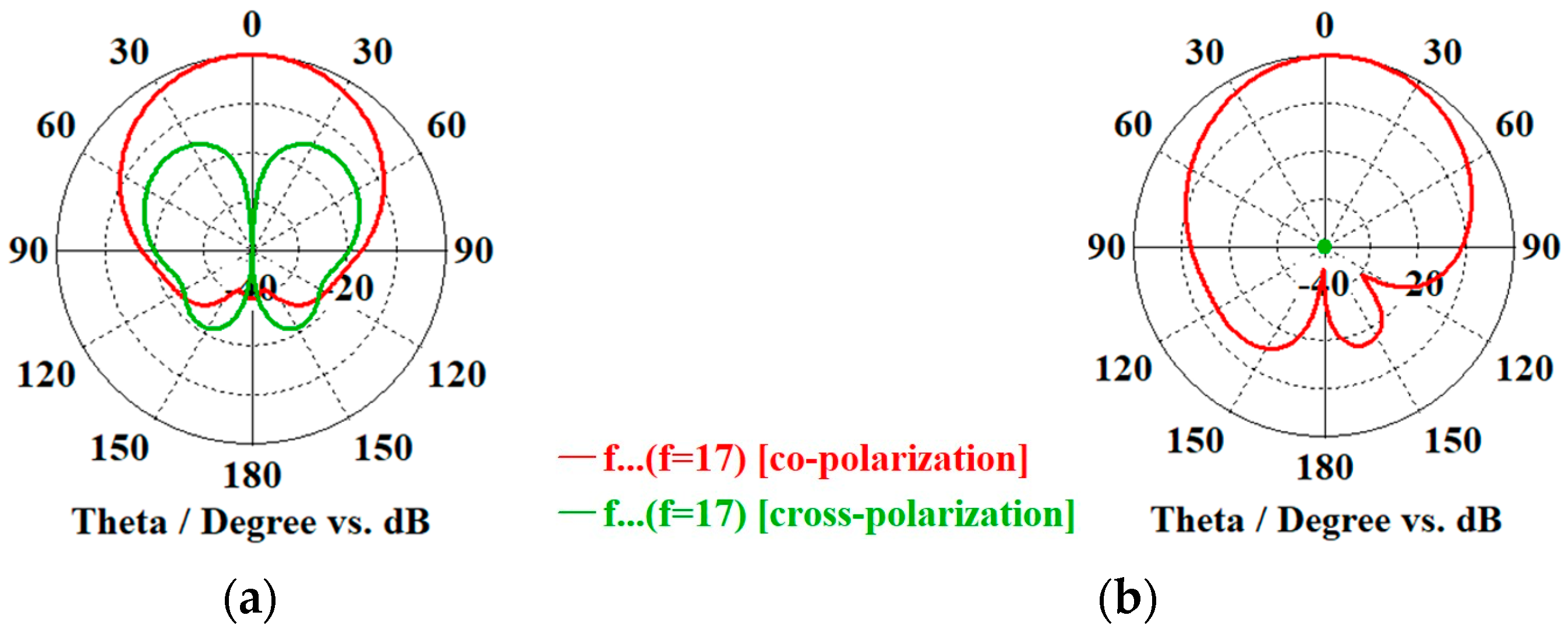
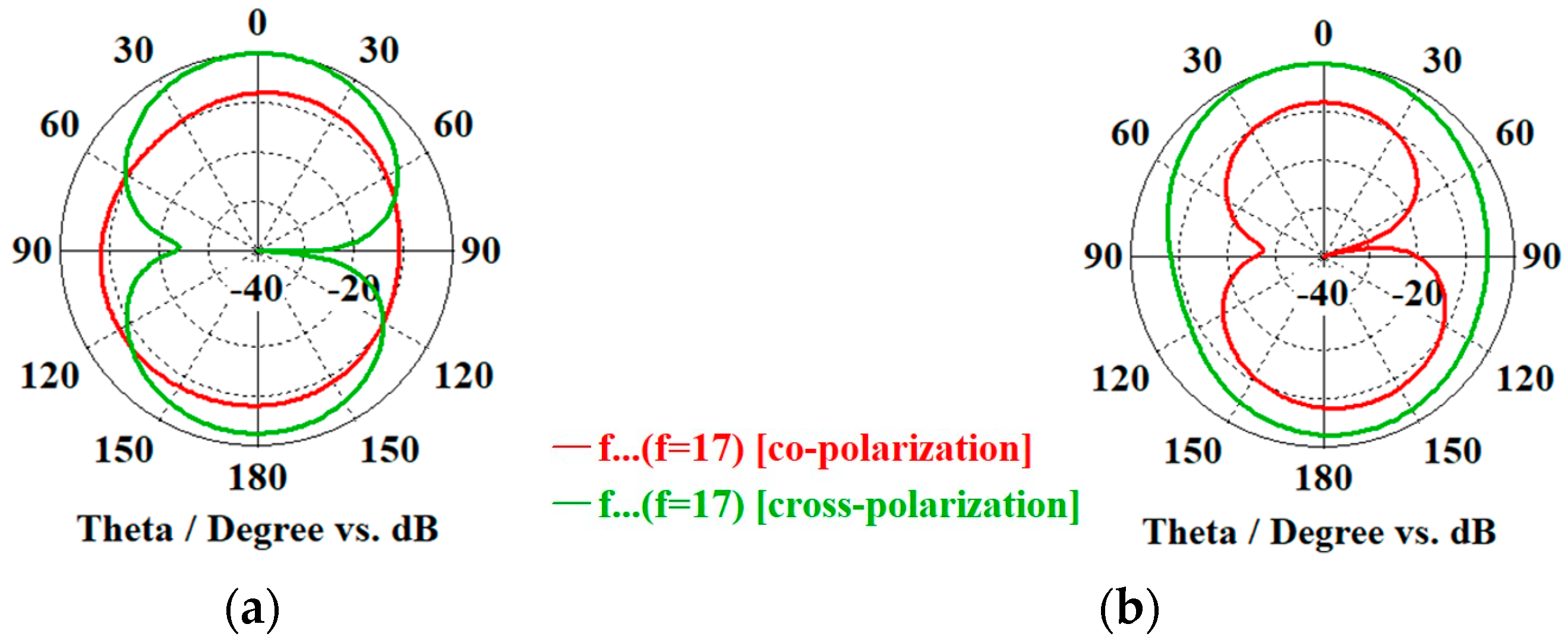
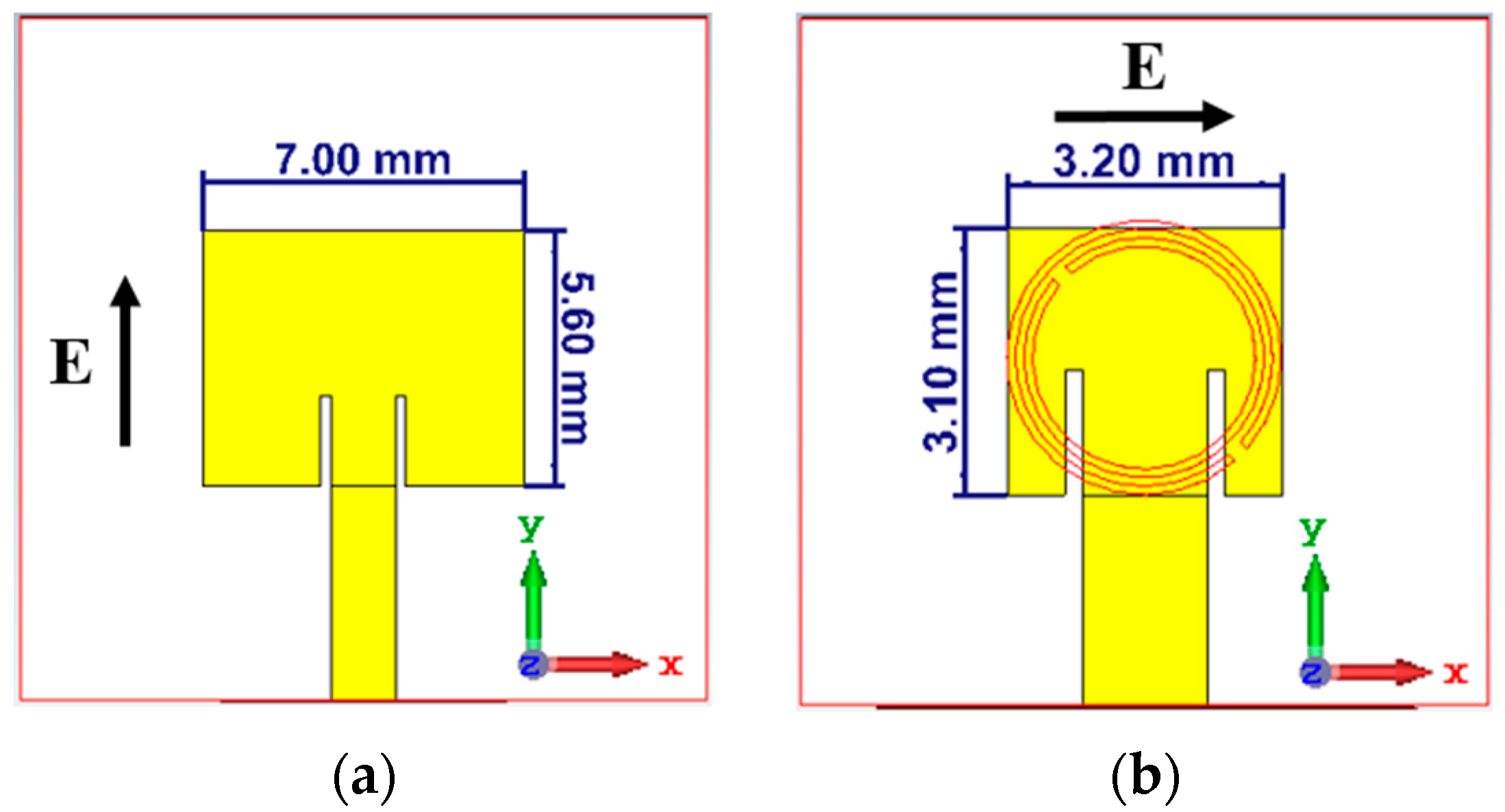
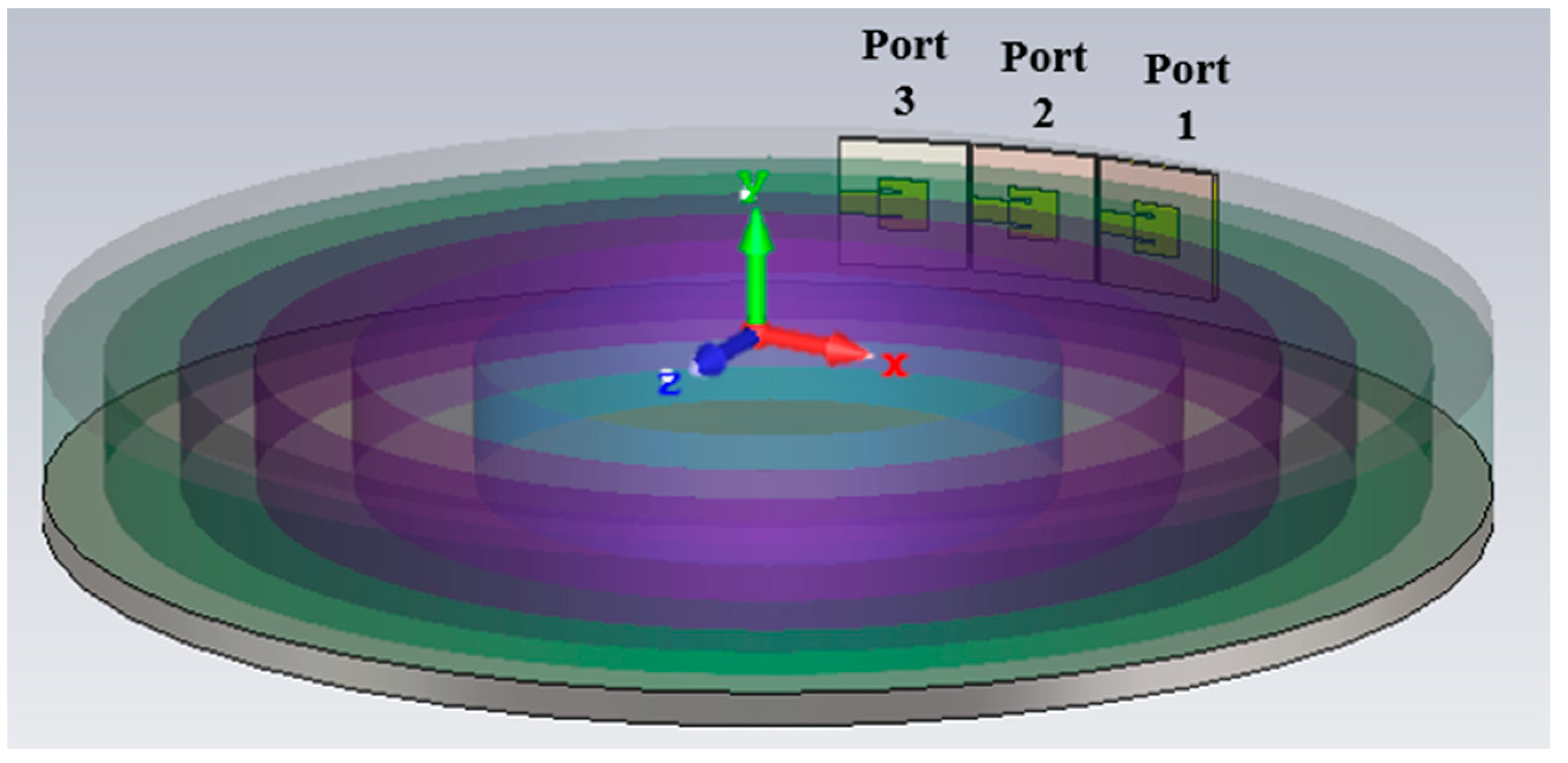
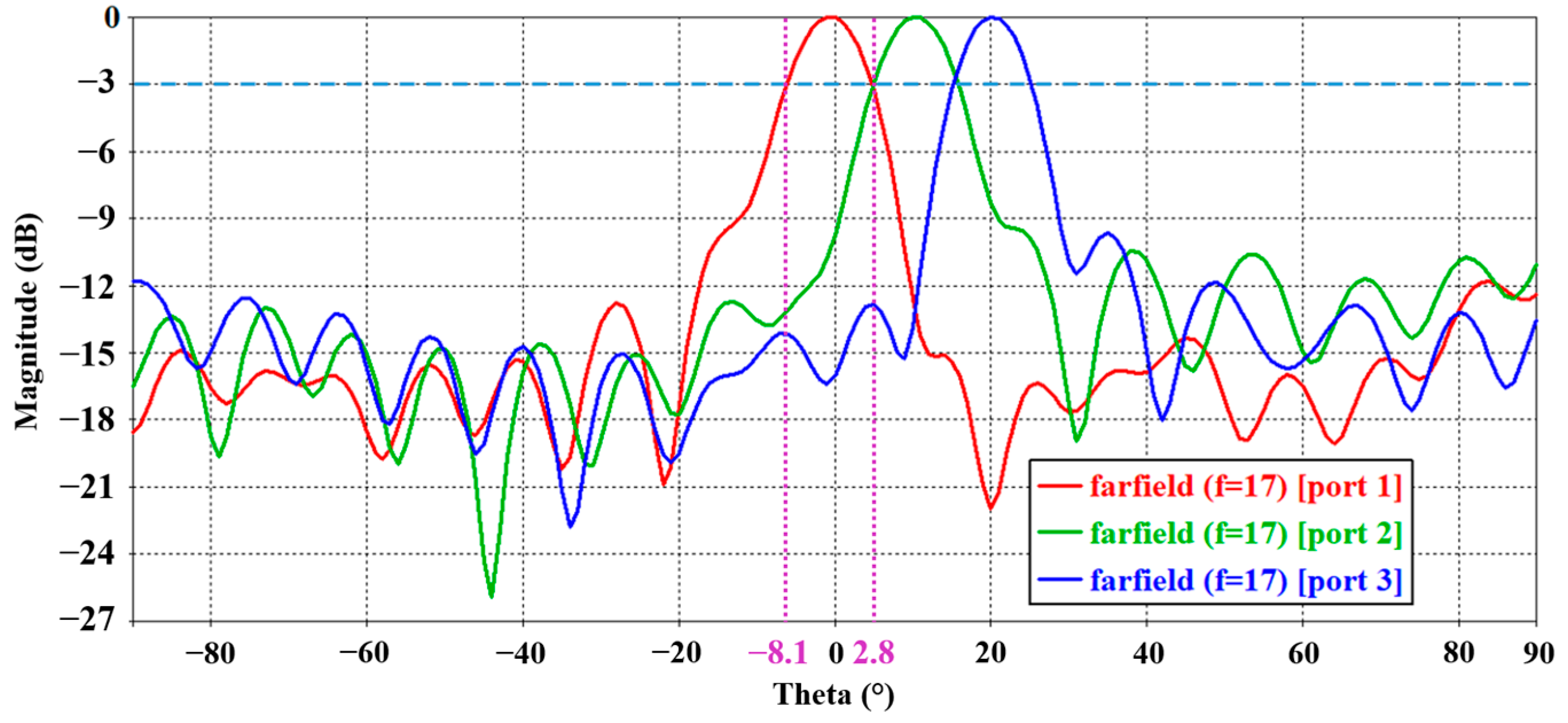

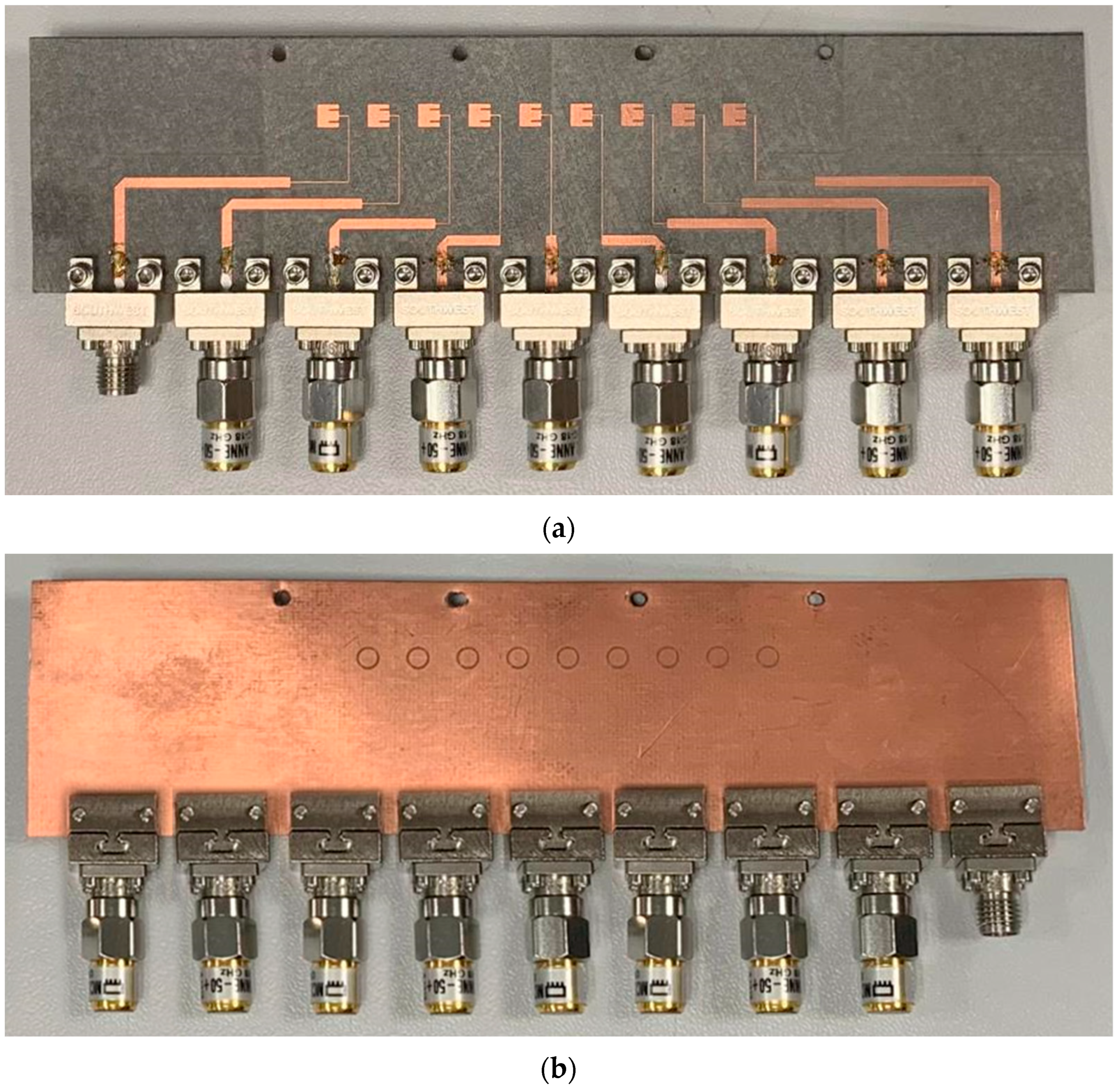
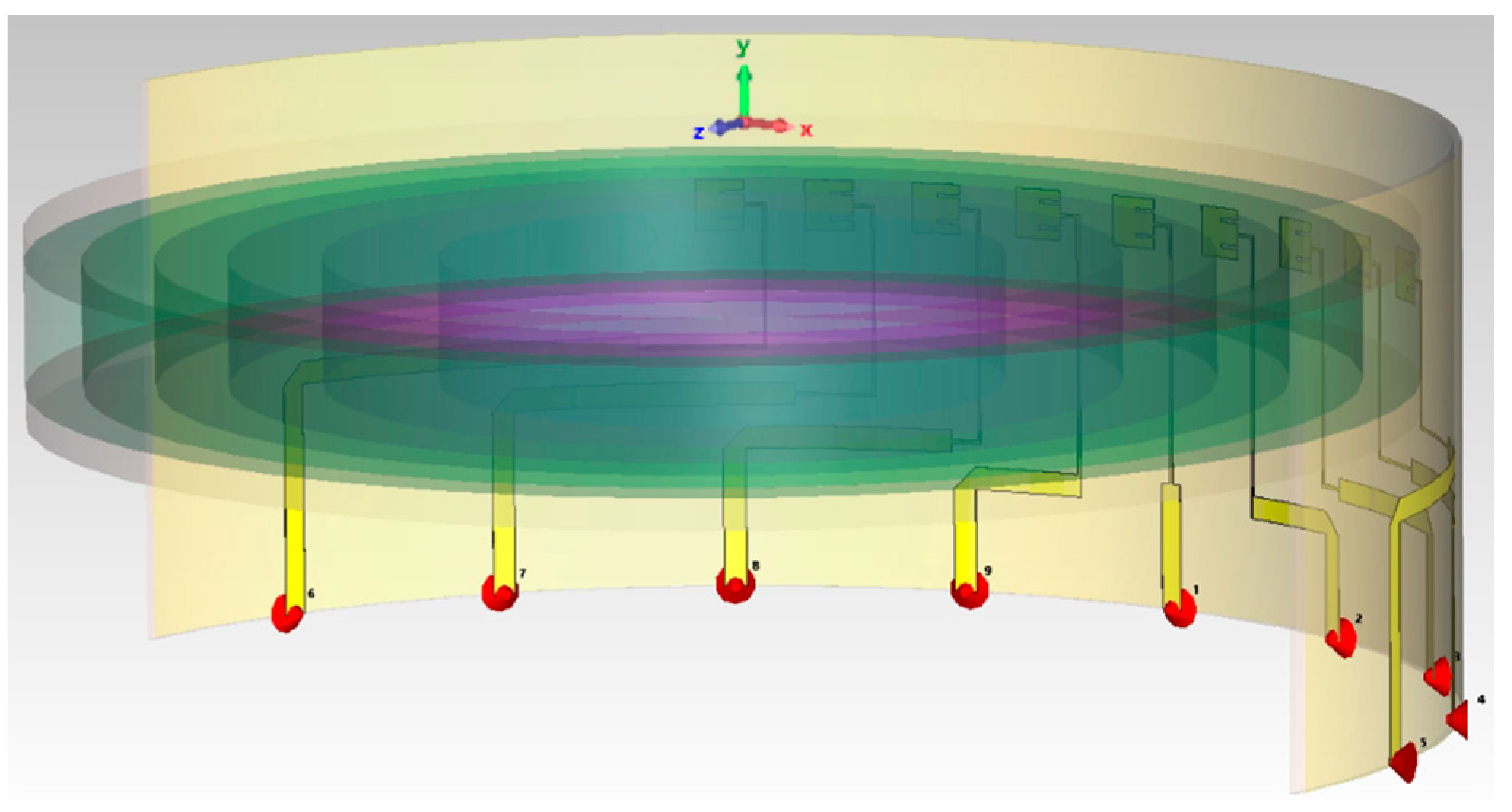
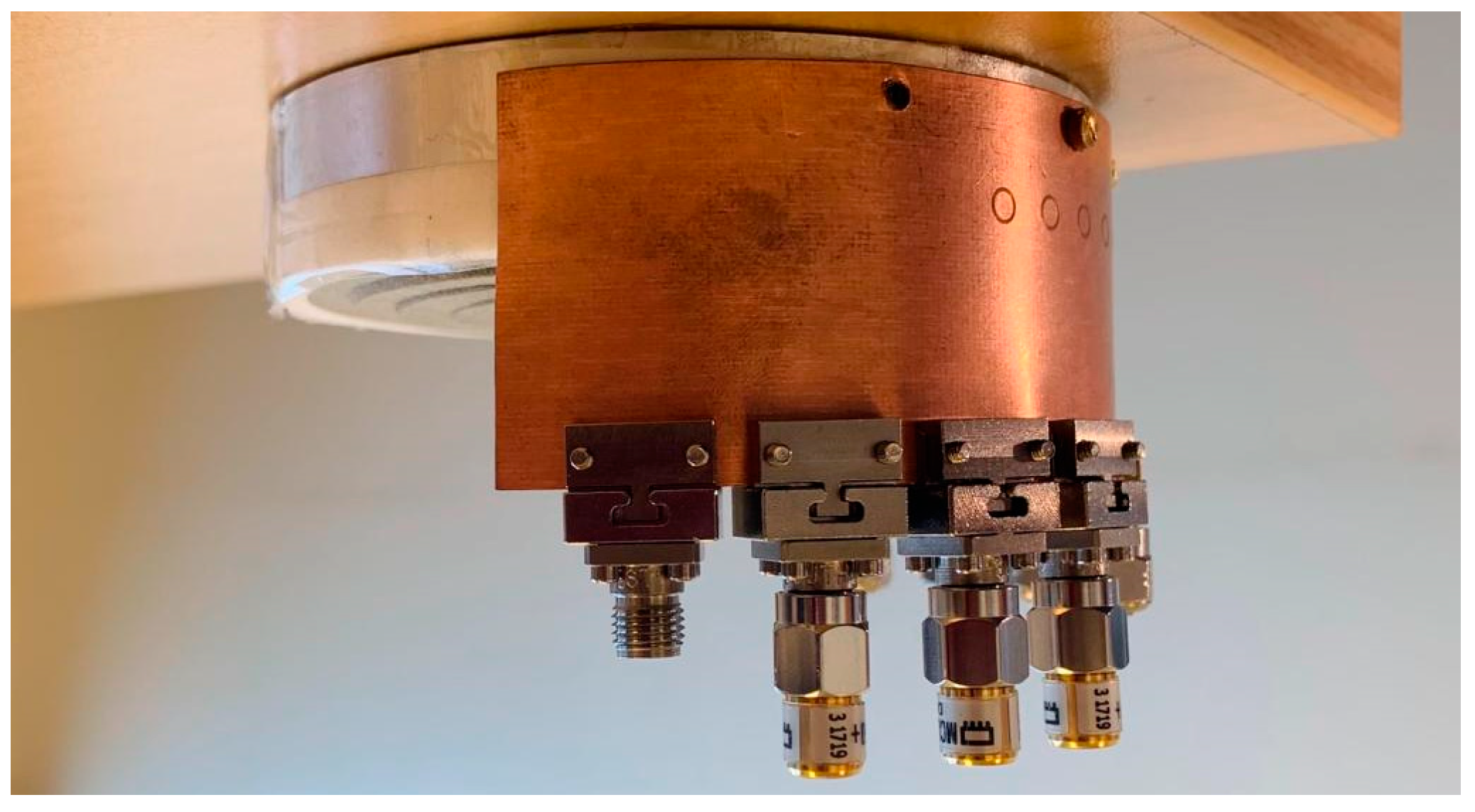
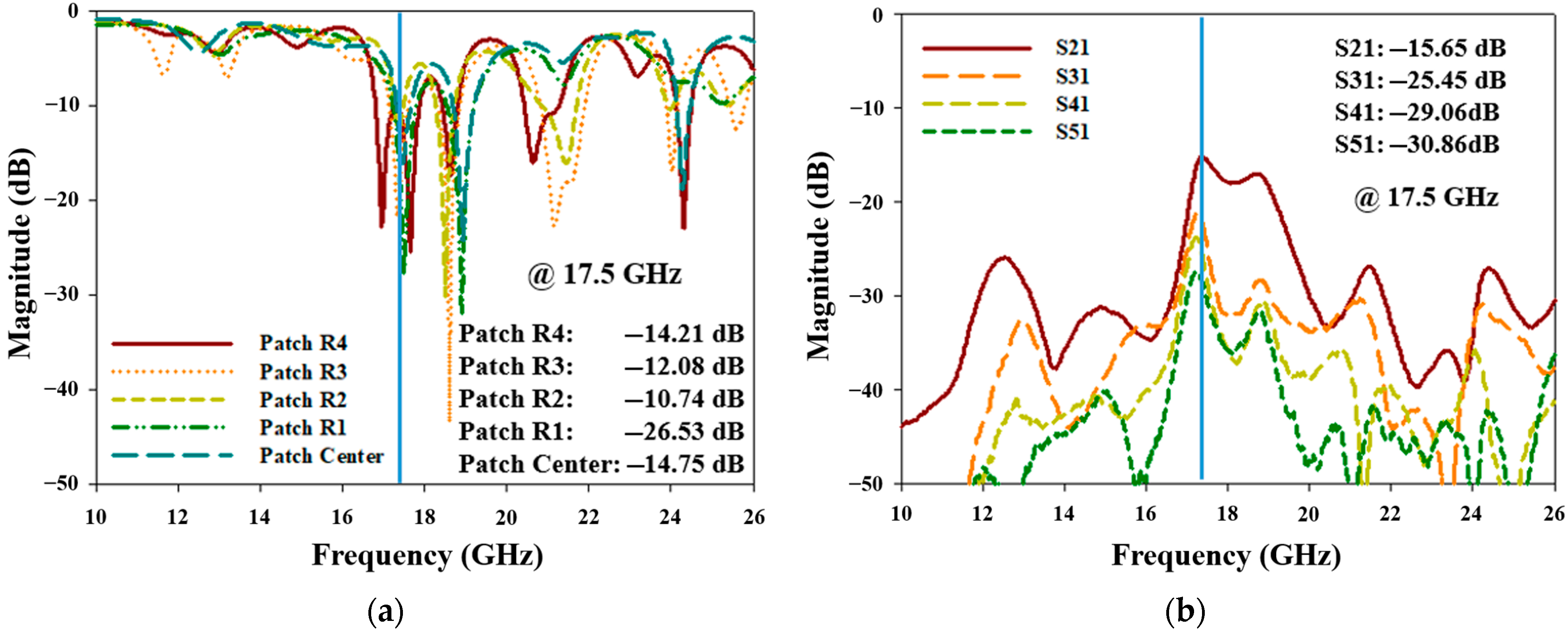

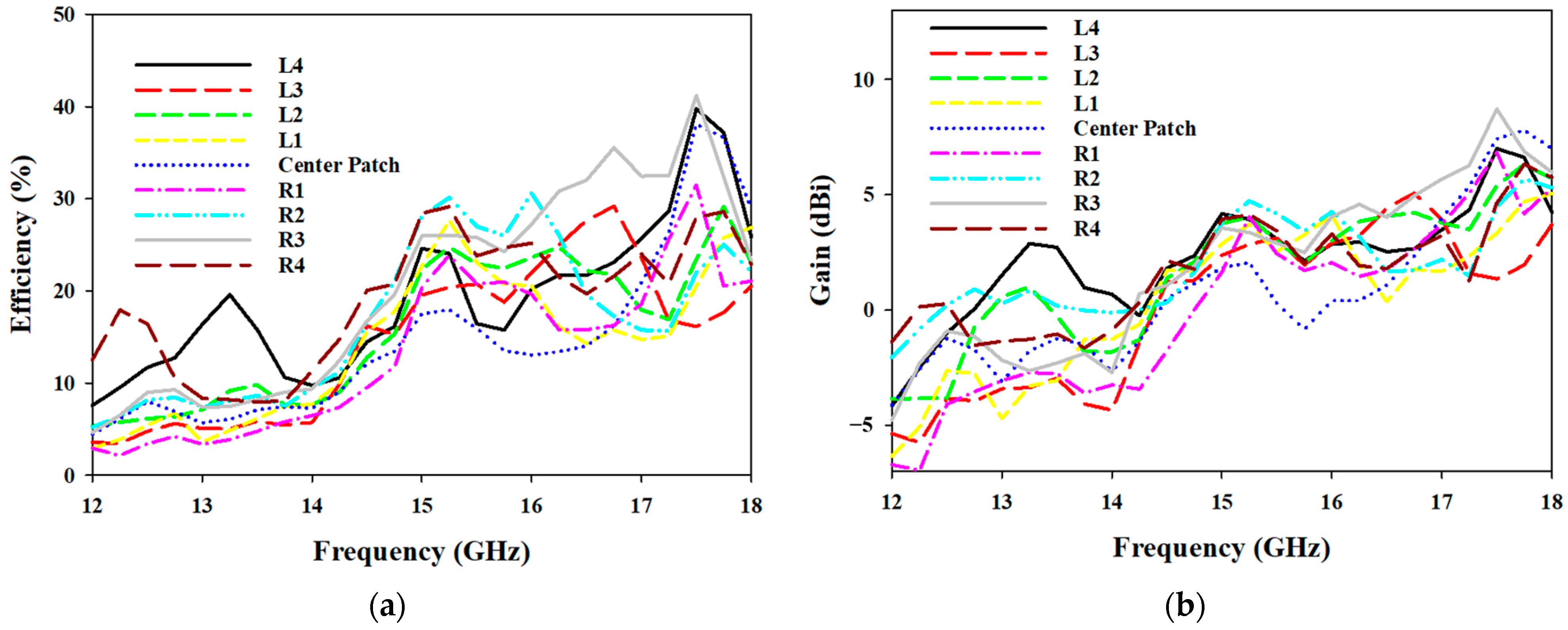
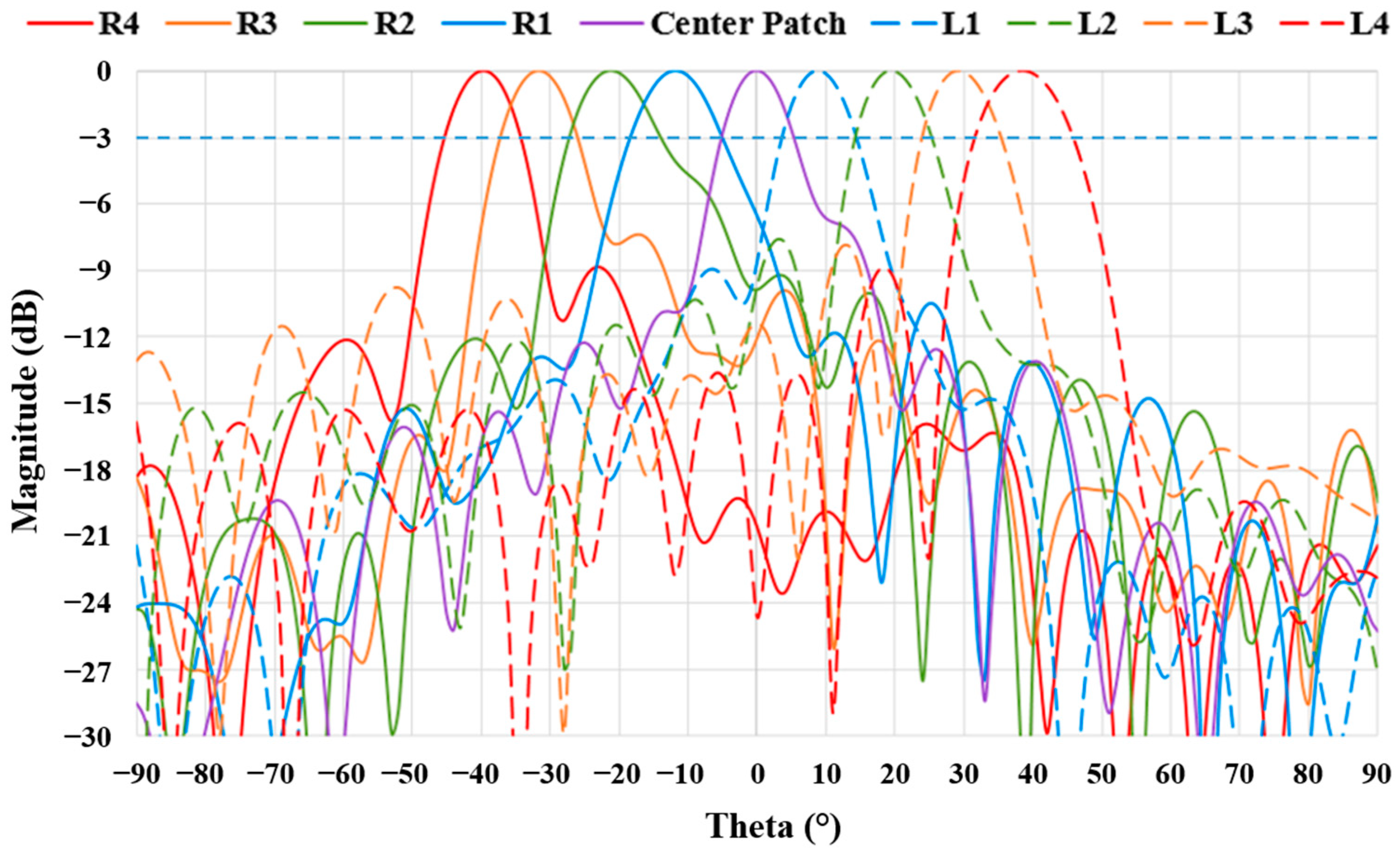
| Parameter | Value (λ) | Value (mm) |
|---|---|---|
| Rsw | 0.85λ | 15 |
| Rsl | 0.85λ | 15 |
| Rw | 0.4λ | 7 |
| Rl | 0.3λ | 5.6 |
| Rr | - | 2 |
| s | - | 0.2 |
| sw | 0.45λ | 8 |
| sl | 0.45λ | 8 |
| w | 0.18λ | 3.2 |
| l | 0.18λ | 3.1 |
| r | - | 1.45 |
| r1or | - | 1.6 |
| r1ir | - | 1.5 |
| r2or | - | 1.4 |
| r2ir | - | 1.3 |
| g | - | 0.2 |
| Antenna | Operating Frequency (GHz) | Efficiency (%) | Gain (dB) | Beamwidth (°) |
|---|---|---|---|---|
| Regular MPA | 17 | 80 | 7.15 | 75.3 |
| Reduced Size MPA | 17, 21.5, 28 | 87.6 | 4.12 | 89.2 |
| Waveguide with Luneburg lens | 12–18 | 75 | 15.78 | 12.4 |
| Reduced size MPA with Luneburg lens | 17, 21.5, 28 | 63 | 10.87 | 10.9 |
Disclaimer/Publisher’s Note: The statements, opinions and data contained in all publications are solely those of the individual author(s) and contributor(s) and not of MDPI and/or the editor(s). MDPI and/or the editor(s) disclaim responsibility for any injury to people or property resulting from any ideas, methods, instructions or products referred to in the content. |
© 2023 by the authors. Licensee MDPI, Basel, Switzerland. This article is an open access article distributed under the terms and conditions of the Creative Commons Attribution (CC BY) license (https://creativecommons.org/licenses/by/4.0/).
Share and Cite
Muhamad Nadzir, N.; Himdi, M.; A. Rahim, M.K.; Murad, N.A.; Ayop, O.; Lafond, O. Multi-Beam Luneburg Lens with Reduced Size Patch Antenna. Electronics 2023, 12, 3028. https://doi.org/10.3390/electronics12143028
Muhamad Nadzir N, Himdi M, A. Rahim MK, Murad NA, Ayop O, Lafond O. Multi-Beam Luneburg Lens with Reduced Size Patch Antenna. Electronics. 2023; 12(14):3028. https://doi.org/10.3390/electronics12143028
Chicago/Turabian StyleMuhamad Nadzir, Norsaidah, Mohamed Himdi, Mohamad Kamal A. Rahim, Noor Asniza Murad, Osman Ayop, and Olivier Lafond. 2023. "Multi-Beam Luneburg Lens with Reduced Size Patch Antenna" Electronics 12, no. 14: 3028. https://doi.org/10.3390/electronics12143028
APA StyleMuhamad Nadzir, N., Himdi, M., A. Rahim, M. K., Murad, N. A., Ayop, O., & Lafond, O. (2023). Multi-Beam Luneburg Lens with Reduced Size Patch Antenna. Electronics, 12(14), 3028. https://doi.org/10.3390/electronics12143028







